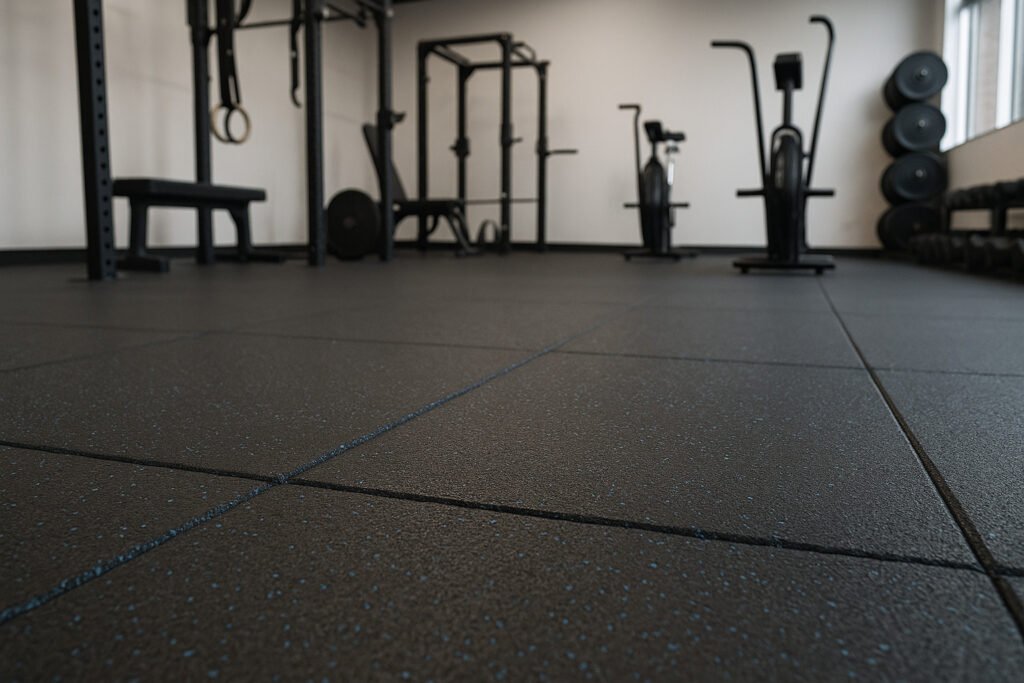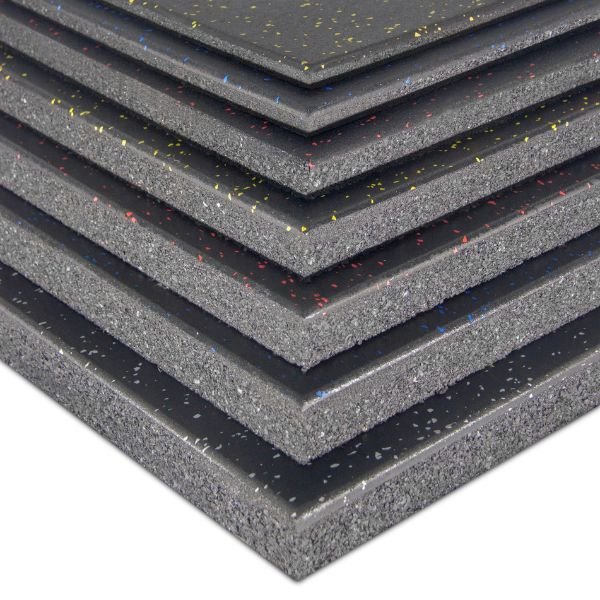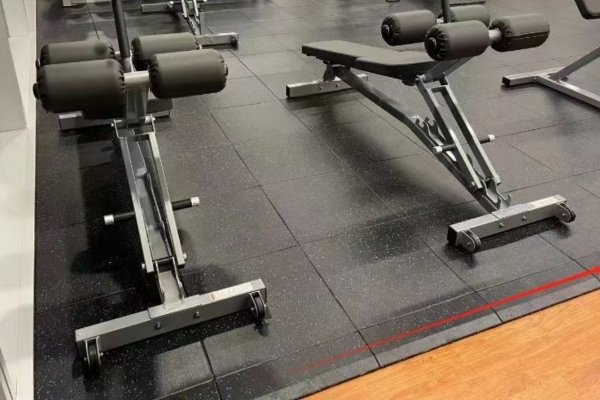What thickness of rubber flooring is best for heavy weightlifting?
Heavy weightlifting without proper flooring can damage equipment, break your subfloor, and even injure users. Choosing the wrong thickness costs money and safety.
The best rubber flooring thickness for heavy weightlifting is between 20mm and 50mm, depending on the intensity of training and the equipment used.
 When you’re designing a weight training area, not all rubber floors are equal. Too thin, and it won’t absorb shock. Too thick, and it becomes unnecessarily expensive or hard to install. Let’s explore what really works—and why.
When you’re designing a weight training area, not all rubber floors are equal. Too thin, and it won’t absorb shock. Too thick, and it becomes unnecessarily expensive or hard to install. Let’s explore what really works—and why.
Why does thickness matter in heavy weightlifting areas?
Thicker rubber flooring reduces the risk of damage, increases shock absorption, and offers better sound insulation.

Shock absorption & injury prevention
A thick rubber tile—especially in the 30mm–50mm range—acts as a buffer. It cushions the impact, protecting both the floor and the lifter.
Sound and vibration control
A thicker rubber surface absorbs vibration and reduces noise from dropped weights. This is essential for gyms inside residential buildings or commercial areas.
Durability and longevity
Thin mats wear out fast in weight zones. Investing in 20mm or more ensures the flooring can handle years of heavy training.
Recommended thickness comparison
| Training Type | Ideal Thickness | Recommended Product |
|---|---|---|
| Dumbbell use (light) | 15mm–20mm | Interlocking Rubber Tile |
| Barbell lifting (medium) | 20mm–30mm | Tiny Granule Rubber Tile |
| Olympic lifting / heavy drops | 40mm–50mm | Laminated Gym Rubber Tile |
Best Lanhefloor products for weight zones

Tiny Granule Rubber Tile – Built for impact?
- Thickness: 15mm–50mm
- Material: 100% fine SBR granules or SBR + EPDM dots
- Use: Drop zones, free weight areas
- Highlights: Affordable, shock-absorbing, non-slip
- Learn more
Composite Rubber Tile – Premium surface, maximum durability?
- Thickness: 15mm–50mm
- Material: SBR base + laminated EPDM surface
- Use: Olympic lifting platforms, high-end gyms
- Highlights: Easy to clean, elite durability
- Learn more
Interlocking Rubber Tile – Is convenience your top priority?
- Thickness: 10mm–25mm
- Material: Molded SBR or composite
- Use: PT zones, home gyms
- Highlights: Easy install, modular, no glue needed
- Learn more
Product Comparison
| Product | Thickness | Best For | Key Benefit |
|---|---|---|---|
| Tiny Granule Tile | 15–50mm | Weight zones | Shock absorption |
| Composite Tile | 15–50mm | Olympic zones | Clean surface + design |
| Puzzle Tile | 10–25mm | Home/PT zones | Modular, easy install |
What thickness should you avoid?
Rubber rolls in 3mm to 12mm are not suitable for heavy weightlifting. They’re ideal for:
- Cardio and yoga rooms
- Offices, walkways
- Stretching areas
Conclusion
For heavy lifting, rubber flooring must be at least 20mm thick—and ideally up to 50mm for maximum safety and performance. Lanhefloor offers certified, factory-direct rubber tiles built to last.
✅ Related Articles
- How Thick Should a Gym Mat Be?
- Rubber Flooring Durability Guide
- Rubber Tiles vs Rolls: What’s Better for Your Gym?
📣 Call to Action
- Need help choosing the right thickness? Request a Free Sample
- Still have questions? Contact Us at info@lanhefloor.com
- Explore more projects in our Project Gallery
